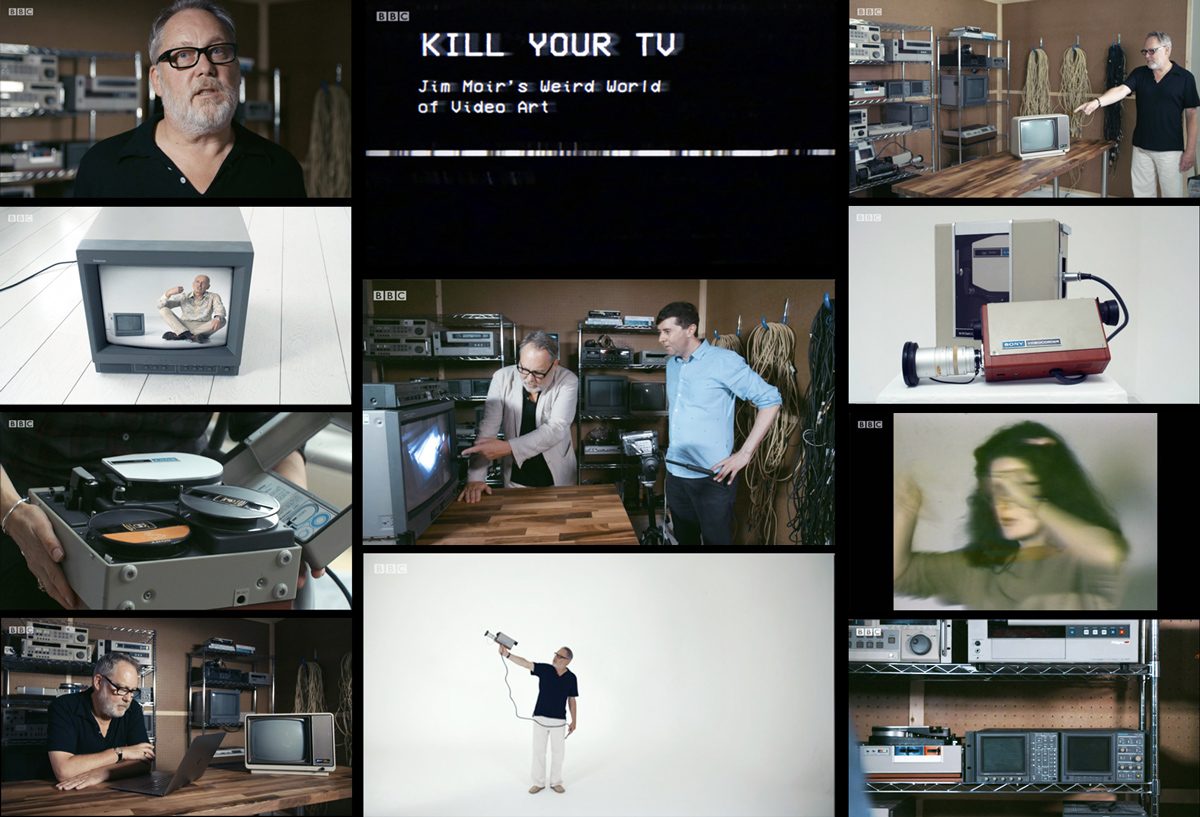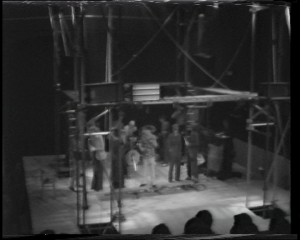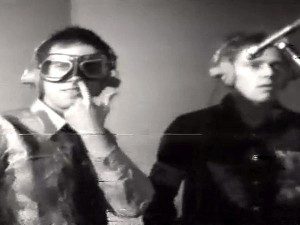At Greatbear we have many, many machines. A small selection of our analogue video players, CRT monitors, cameras, cables and tapes recently found work as props (both functional and decorative) in the BBC documentary “Kill Your TV: Jim Moir’s Weird World of Video Art”, on BBC iPlayer here.
From the BBC website: “Jim Moir, aka Vic Reeves, explores video art, revealing how different generations hacked the tools of television to pioneer new ways of creating art."
Our obsession with collecting and restoring rare video equipment is vital for our work. As technology developed through the latter half of the 20th century, dozens of different formats of video tape were created - each requiring specialist equipment to play it back: equipment which is now obsolete. The machines have not been manufactured for decades and the vast majority of them have been scrapped.
Those that remain are wearing out - the rotating head drums that read video tape have a finite number of working hours before they need replacement. Wear to the head drum tips is irrevocable, and the remaining few in existence are highly sought-after.
Even TV companies, where U-matic, Betacam and countless other formats of VTR machine were once ubiquitous, no longer have access to the machines and monitors we provided for “Kill Your TV”.
It is a similar conundrum for the artists who produced work with older video technology, and for the galleries and museums who hold collections of their work. We have recently been working on a fascinating project with specialist art conservator for time-based media, Brian Castriota and the Irish Museum of Modern Art, transferring important video artworks produced between 1972 - 2013 from multiple video tape formats, by artists including Isaac Julien, Gillian Wearing and Willie Doherty - more on this in a future blog post!
conceptual immateriality & the material device
In "Kill Your TV", Jim Moir describes a demonstration of David Hall’s "Vidicon Inscriptions" (1973) as “an electronic image that doesn’t really exist in a physical space” which nevertheless relies on the quirks of (very physical) vintage video equipment for its enactment.
Artist Peter Donebauer refers specifically to immateriality inherent to his 1974 video art piece “Entering” (broadcast via the BBC’s arts programme “2nd House”). PD: "Technically, the real core of this is the signal. It made me think about what this medium was, because it’s not material in the same way as painting, sculpture or even performance, dance, film - almost anything that has physicality.”
But for a signal to be perceived, it needs to be reproduced by a physical device capable of reading it. The dangers facing video artwork preservation lie not only in the fragility of the tape itself, but in the disappearance of rare playback machines and the specialist tools for their maintenance and repair; of the service manuals, calibration tapes and the expertise needed to set them up.
The 'tools of television' relished in "Kill Your TV" are the material devices we are striving to save, repair and maintain.
links & further reading:
Read about our facilities to transfer video made with the Sony Portapak system featured in the documentary: Sony 1/2 inch Portapak (EIAJ) / CV2100 / CV2000 open reel video tape
Our work with Videokunstarkivet, an exciting archival project mapping all the works of video art that have been made in Norway since the mid-1960s, funded by the Norwegian Arts Council.
“Kill Your TV: Jim Moir’s Weird World of Video Art” was made for BBC4 by Academy 7 Productions









